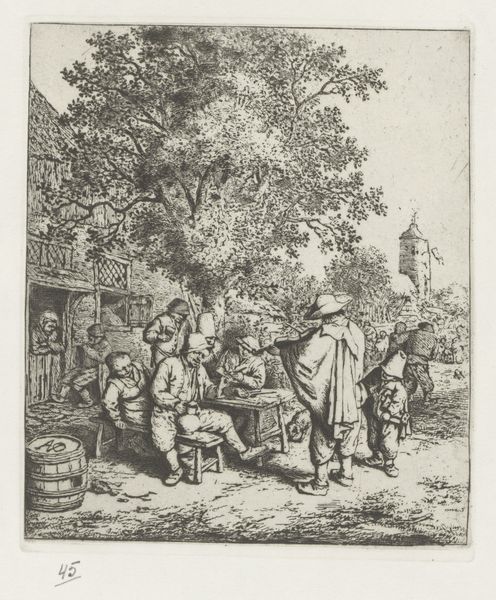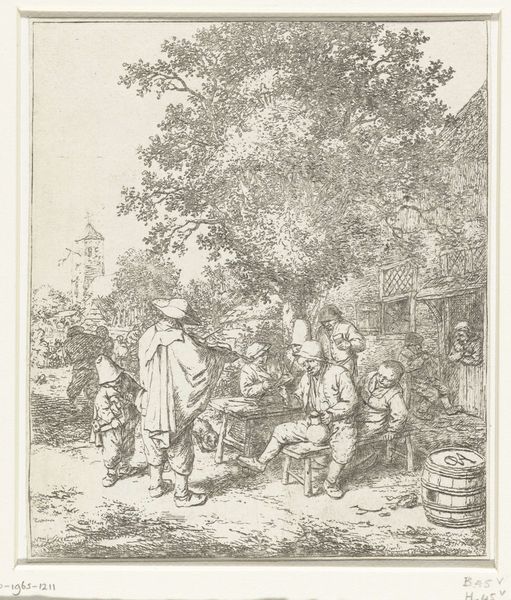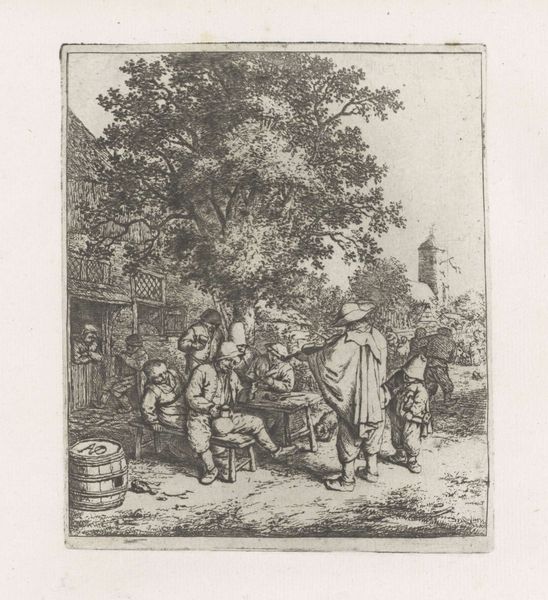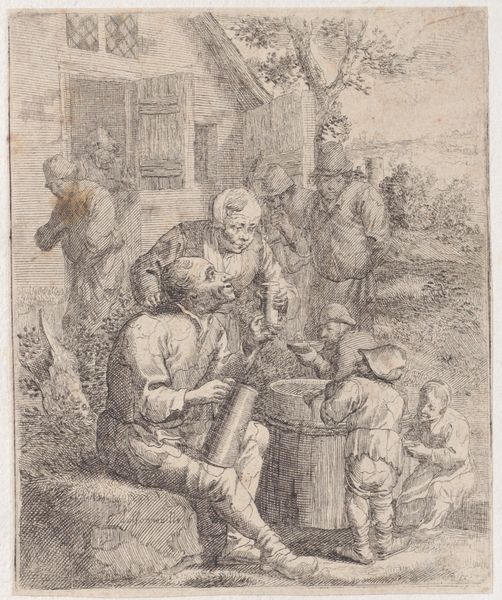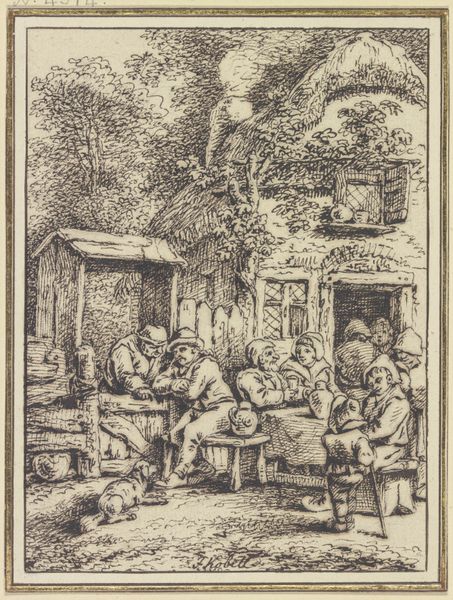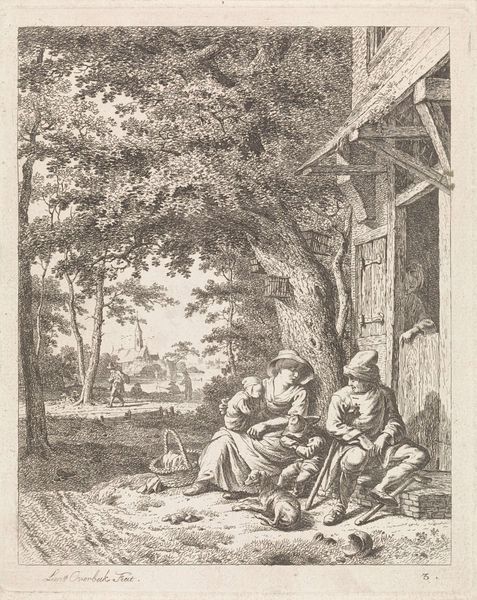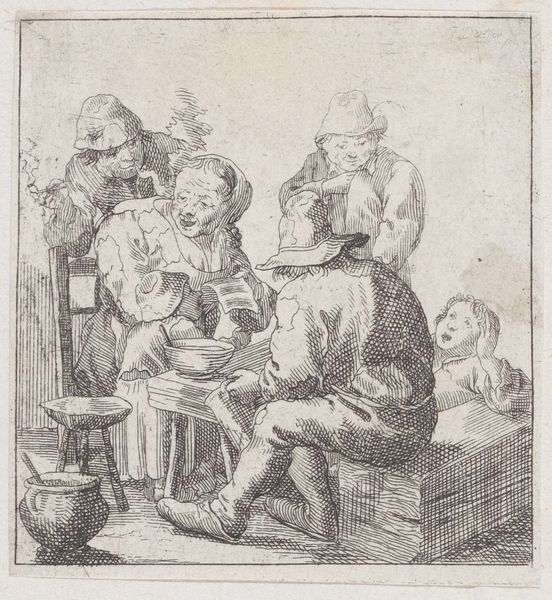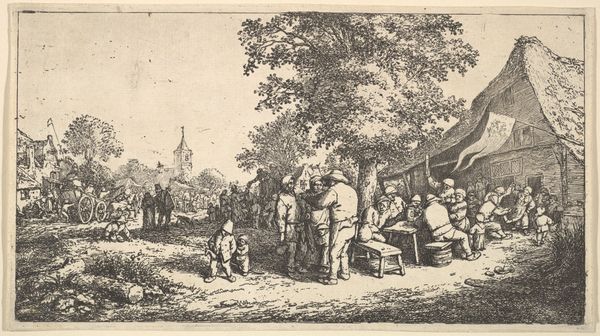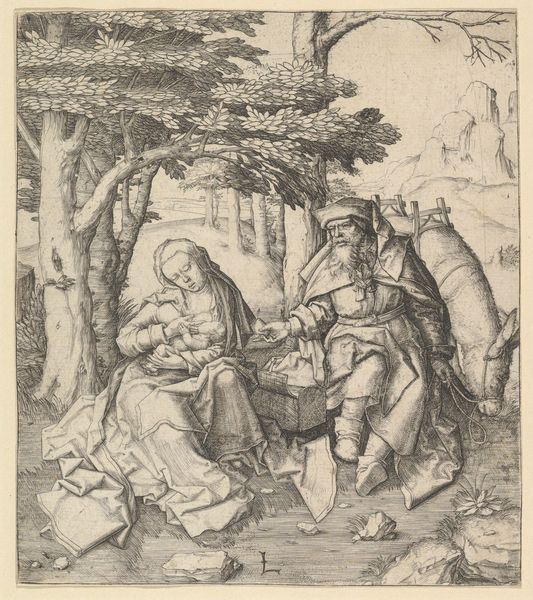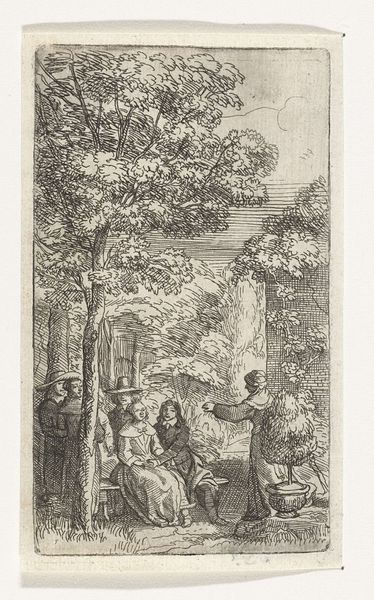
drawing, print, etching
#
drawing
#
dutch-golden-age
# print
#
etching
#
landscape
#
cityscape
#
genre-painting
Dimensions: Sheet: 5 15/16 × 5 1/16 in. (15.1 × 12.9 cm)
Copyright: Public Domain
Editor: So, this is Adriaen van Ostade's "Violinist and Little Organgrinder," made sometime between 1610 and 1685. It's an etching, so a print, and it's got this really busy, everyday kind of scene. I’m struck by how many different figures are packed into this little space! How do you interpret this work? Curator: This etching offers a fascinating glimpse into the social dynamics of the Dutch Golden Age. Ostade was known for his genre scenes, often depicting peasant life, but it's crucial to consider whose perspective is privileged here. How might the artist's own social standing shape this portrayal? Editor: That's interesting! I guess I just assumed it was a straightforward representation, but thinking about perspective shifts everything. Do you think he's romanticizing or criticizing their lifestyle? Curator: It’s a delicate balance. There's a certain warmth in the depiction of communal gathering and music, but also a sense of distance, perhaps even exploitation, in portraying poverty as entertainment. The figures of the violinist and organ grinder are particularly potent, raising questions about labor, class, and artistic agency. Who benefits from this exchange, and at what cost? Editor: Wow, I didn't even think about it that way. I was just seeing a fun street scene. Now I am wondering about the power dynamics between the musicians and the crowd. Curator: Exactly! And consider how these kinds of images circulated. Who was the intended audience? And what role did they play in perpetuating these social structures? These seemingly simple genre scenes become complex reflections of inequality when we consider their historical context. Editor: I am definitely seeing it in a new light now. It’s a great reminder to always consider the social and political context surrounding the artist and the work itself. Thanks! Curator: Absolutely. Art invites us to engage with uncomfortable questions, sparking crucial conversations about power, representation, and history.
Comments
No comments
Be the first to comment and join the conversation on the ultimate creative platform.
